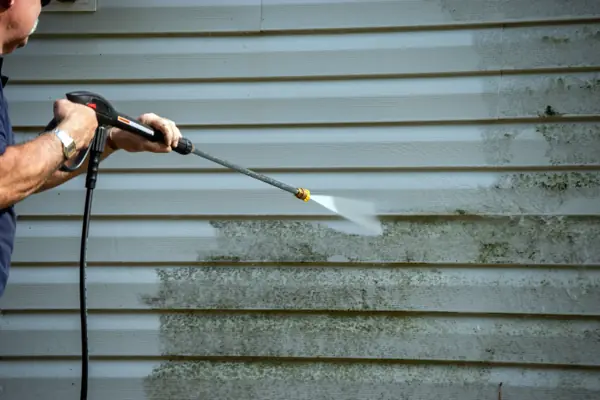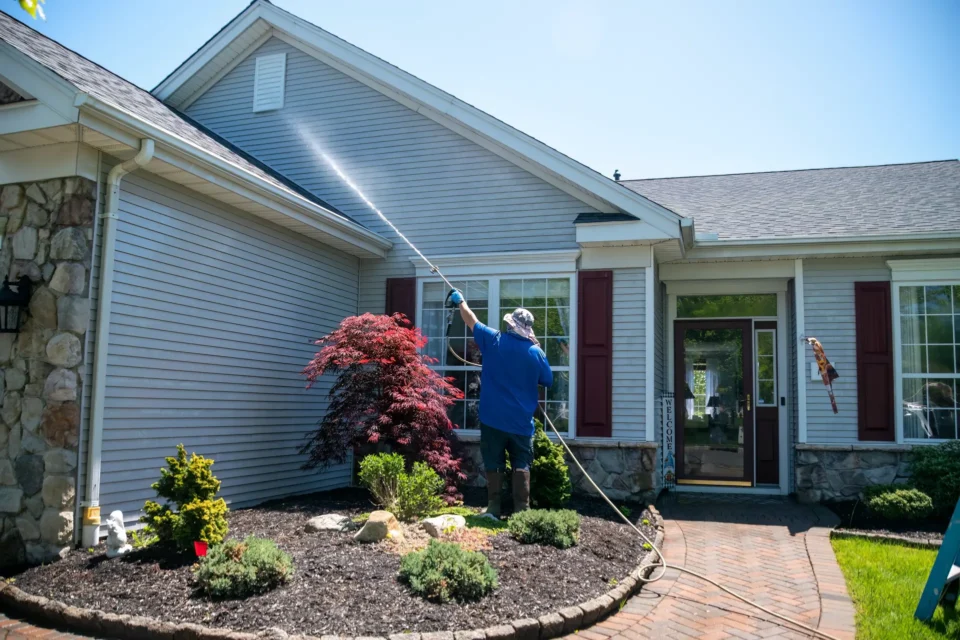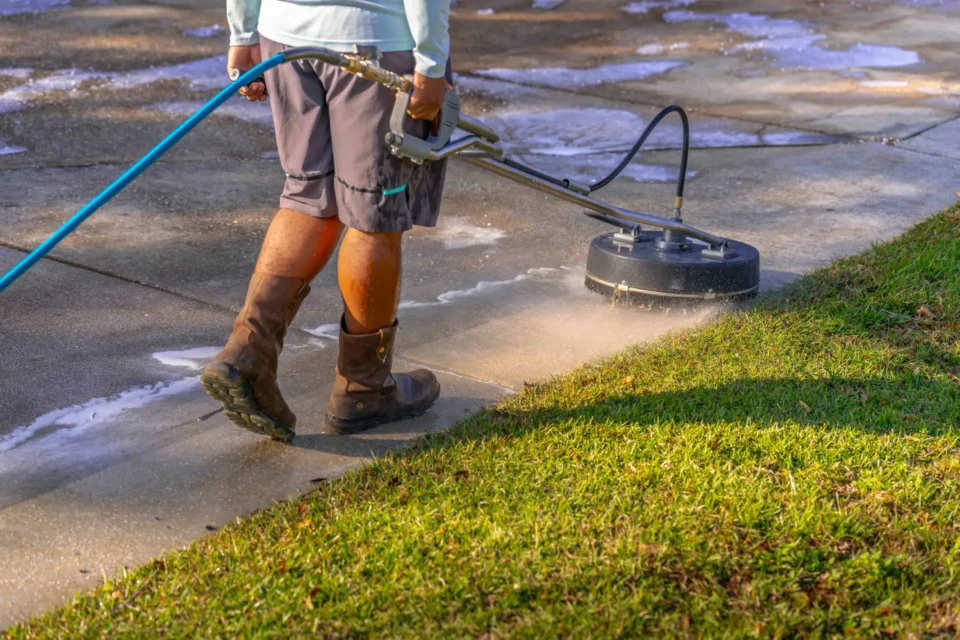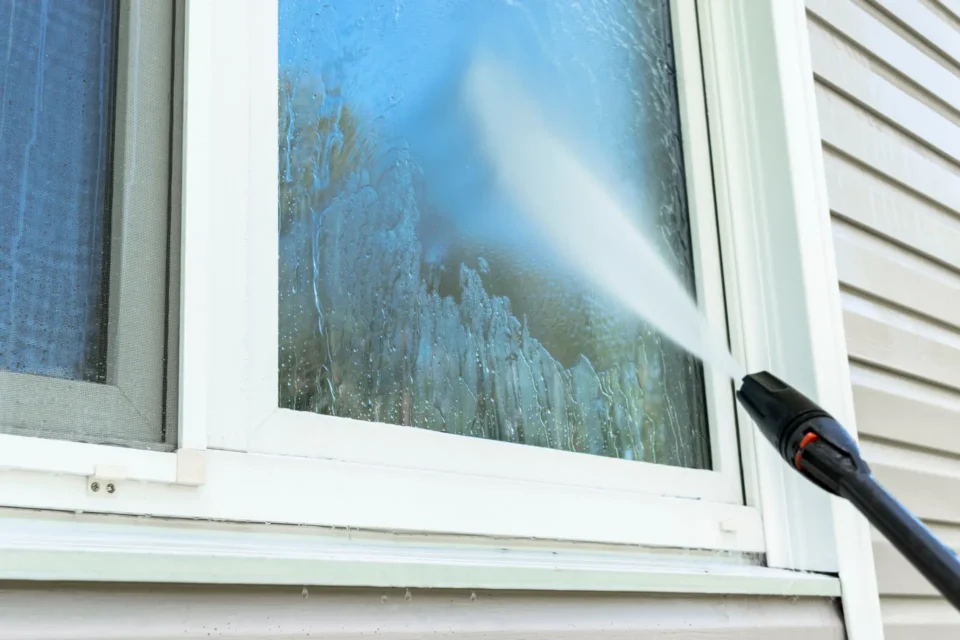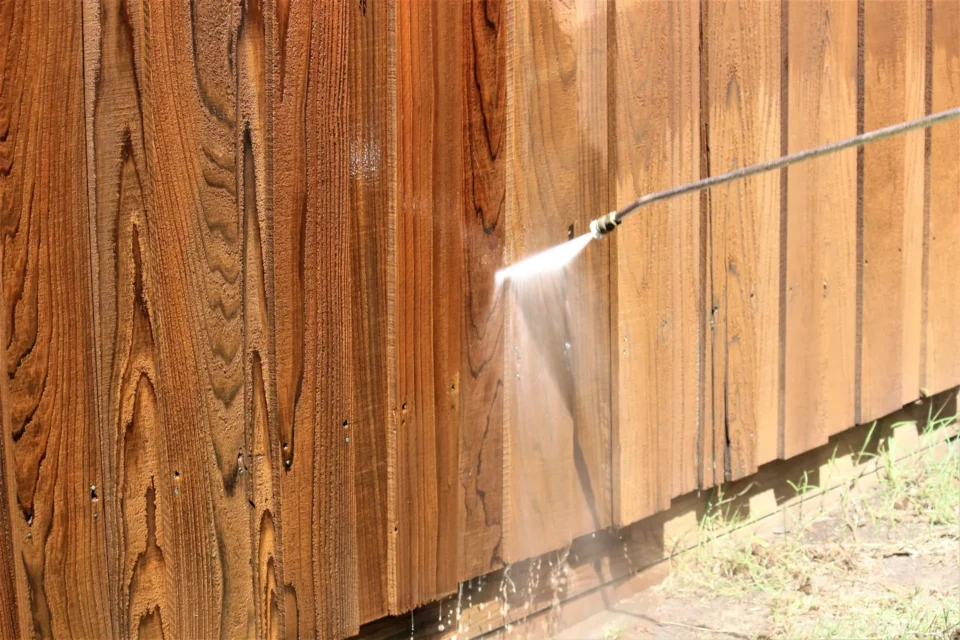The cleaning and maintenance of surfaces, especially exteriors, are essential for property upkeep, but traditional high-pressure washing isn’t always the best option. High-pressure treatments can damage surfaces or simply push microorganisms deeper into cracks and crevices.
In contrast, soft washing is a more effective and gentler approach, designed to tackle not just dirt but the microorganisms that reside on surfaces, like mold, mildew, algae, and bacteria. But how exactly do microorganisms respond to low-pressure soft washing treatments? Let’s break down the science behind soft washing, how it effectively eliminates microorganisms, and why it’s considered a safer option compared to traditional high-pressure washing.
How Do Microorganisms Respond To Low-pressure Soft Washing Treatments?
Microorganisms, including bacteria, fungi, algae, and mold, thrive on surfaces that are consistently exposed to moisture, dirt, and organic matter. These microscopic organisms can quickly colonize areas like roofs, walls, fences, and decks. When it comes to controlling these organisms, how they react to cleaning methods plays a vital role in determining the most effective solution.
- Vulnerability to Chemicals: Microorganisms like mold, mildew, and algae are made up of cell walls that are sensitive to certain chemicals. In soft washing, low-pressure water is combined with specially formulated detergents that break down organic matter, dissolve oils, and kill the microorganisms at their source. The chemicals used in soft washing are specifically chosen for their effectiveness in penetrating these microbial cell walls and disrupting their biological functions. By contrast, high-pressure washing can force microorganisms further into porous materials or break them into smaller particles that are harder to remove.
- Minimal Physical Disruption: Unlike high-pressure washing, which can physically dislodge microorganisms from surfaces through sheer force, soft washing relies on chemical action, which is much more effective in neutralizing microorganisms. Since soft washing uses low-pressure water (around 500 to 1,000 PSI), the microorganisms aren’t physically pushed deeper into the surface or damaged by high-impact water. The detergent works to weaken the cells, making it easier to remove the dead organisms.
- Gradual Elimination: Soft washing’s chemical treatment doesn’t just remove microorganisms on the surface; it also reaches deep into porous materials, killing and removing microorganisms that may be embedded in crevices or on hard-to-reach areas. The treatment continues working long after the application, slowly killing off remaining spores or microscopic colonies that may not have been fully eradicated during the initial wash.
- Less Displacement of Organisms: High-pressure washing can dislodge large amounts of mold, algae, or bacteria, but often just moves them around, creating the illusion of cleanliness without fully addressing the problem. In contrast, soft washing eliminates the microorganisms more effectively without displacing them. This results in a longer-lasting solution and helps prevent regrowth.
What is the Science Behind Soft Washing For Removing Microorganisms?
The science behind soft washing lies primarily in the use of specialized detergents and the principle of low-pressure water delivery. Here’s a breakdown of how soft washing works on a microscopic level:
- Surfactants and Detergents: Soft washing employs surfactants, which are compounds designed to lower the surface tension of water. These surfactants help detergents spread across surfaces more effectively, ensuring thorough coverage. When the solution is applied to a surface, the detergent is able to penetrate the cell walls of microorganisms and break them down. Many of these detergents are biodegradable and non-toxic, making them safe for the environment.
- Biocides and Disinfectants: One of the key components of soft washing solutions is the inclusion of biocides, which are substances that destroy or inhibit the growth of microorganisms. Sodium hypochlorite (commonly known as bleach) and other chlorine-based compounds are frequently used for their ability to kill mold, algae, mildew, and bacteria. The disinfectant works by oxidizing the organic matter in the microorganisms, rendering them inactive.
- pH Levels: Many soft washing detergents are formulated with specific pH levels that help break down the cell walls of microorganisms. For example, alkaline cleaners are effective at breaking down oils and organic matter that microorganisms feed on, while acidic solutions are better for removing calcium-based deposits that may harbor bacteria. The pH balance of the cleaning solution helps ensure that microorganisms are not only removed but prevented from returning by disrupting their environment.
- Time-Release Effect: Unlike high-pressure washing, which provides immediate results, soft washing solutions have a prolonged effect. The treatment continues to break down microorganisms over time, preventing their regrowth and offering a more thorough and lasting clean. The detergent’s active ingredients remain on the surface long enough to destroy microbial colonies that high-pressure systems may have missed.
Can Soft Washing Effectively Eliminate Harmful Microorganisms on Surfaces?
Yes, soft washing can be highly effective at eliminating harmful microorganisms on a variety of surfaces. The process targets the root cause of microbial growth by killing the organisms and preventing regrowth. Here are some examples of how soft washing proves effective:
- Mold and Mildew: Mold and mildew thrive in moist, shaded environments, often appearing on roofs, siding, and decks. Soft washing’s ability to kill mold at the root level makes it one of the most effective methods for preventing future growth. The use of biocides, combined with low-pressure water, ensures that mold spores are killed on contact, and the solution continues to prevent regrowth.
- Algae and Lichens: Algae can grow on roofs, walls, and other surfaces, especially in humid climates. Algae thrive in wet environments and can cause discoloration, but more importantly, they can deteriorate roofing materials over time. Soft washing eliminates algae and lichens from surfaces and prevents future growth by thoroughly disinfecting surfaces and killing the root system of the organisms.
- Bacteria and Pathogens: Surfaces that are exposed to high foot traffic, such as sidewalks, patios, and driveways, can harbor harmful bacteria and pathogens. Soft washing cleans these surfaces without the need for abrasive techniques that can damage them. The biocides and disinfectants in soft washing solutions effectively kill harmful bacteria while leaving the surfaces intact.
- Long-Term Prevention: The chemicals used in soft washing provide residual protection, meaning that they continue to work even after the job is done. This reduces the likelihood of future microbial growth, giving property owners peace of mind that their surfaces will remain clean for a longer period of time. Regular soft washing can prevent microorganisms from taking hold, keeping surfaces cleaner and healthier.
Why is Soft Washing Considered a Safer Option For Addressing Microorganisms?
When compared to traditional high-pressure washing, soft washing is considered a safer and more effective method for addressing microorganisms. Here’s why:
- Preserves Surface Integrity: High-pressure washing can damage delicate surfaces, such as shingles, paint, wood, and even concrete. The force of the water can strip away protective coatings, crack materials, and even cause injury. Soft washing, on the other hand, uses a gentle flow of water combined with chemical treatment, ensuring that surfaces remain intact and undamaged while still achieving a deep clean.
- Environmental Safety: Traditional pressure washing can lead to water runoff that carries harmful chemicals, dirt, and contaminants into nearby drainage systems. Many of the chemicals used in high-pressure washing can be toxic to the environment. Soft washing, however, often uses biodegradable chemicals that are less harmful to plants, animals, and water systems. The detergents used are carefully selected to minimize environmental impact while still being effective at killing microorganisms.
- Health and Safety: Soft washing eliminates the risk of injury associated with high-pressure systems, both for the property owner and the service technician. High-pressure washers are dangerous machines, capable of causing severe injuries if the pressure is too high or misdirected. Since soft washing uses significantly lower pressure, it’s a safer option for technicians working on ladders or roofs, and for property owners concerned about the risk of accidents.
- Long-Term Effectiveness: As mentioned earlier, soft washing provides a longer-lasting clean. The biocides in the solution not only kill existing microorganisms but also prevent their regrowth, which means less frequent cleaning and fewer disruptions to your property’s appearance and functionality. This is a much more sustainable solution than repeatedly using high-pressure washing that can lead to continual damage or less effective results.
Soft washing is a superior and safer method for tackling microorganisms on surfaces. It not only removes harmful microbes like mold, mildew, and algae, but it does so in a way that’s gentler on surfaces and the environment. The combination of low-pressure water and specialized cleaning solutions ensures that microorganisms are effectively neutralized without the risks associated with high-pressure washing.
By choosing soft washing, property owners can enjoy a cleaner, healthier environment without the potential for damage, making it an invaluable tool in maintaining the integrity of both residential and commercial properties.
Affordable Soft Washing Services: Invest in Long-Term Cleanliness and Safety
At Power Clean Pressure Washing, we understand the importance of both quality and affordability. Our soft washing services are designed to provide thorough cleaning while keeping your surfaces intact and ensuring the health of your environment. Whether you’re dealing with algae, mold, mildew, or bacteria, our team offers effective and sustainable solutions.
Our service pricing is tailored to meet the needs of both residential and commercial clients. We offer competitive rates based on the size of the area to be treated and the complexity of the job. Here’s a breakdown of our pricing:
- Small Residential Jobs (Roofs, Siding, Patios): Starting at $250
- Medium Residential Jobs (Larger Homes, Decks, Fences): Starting at $450
- Large Residential or Commercial Jobs (Multi-Story Buildings, Extensive Roof Treatments): Starting at $700
- Custom Packages for Ongoing Maintenance: Contact us for tailored quotes
Ready to Experience the Power of Soft Washing?
Don’t let microorganisms, mold, or mildew take over your property. At Power Clean Pressure Washing, we provide reliable, eco-friendly soft washing solutions to keep your surfaces clean and safe. Our expert team uses state-of-the-art equipment and proven techniques to remove even the toughest stains and harmful organisms, all without damaging your property.
Contact us today to schedule your free consultation or to request a personalized quote. Let us show you how easy and cost-effective it can be to maintain a clean, healthy environment with soft washing.
Call us now or visit our website to book your service!
